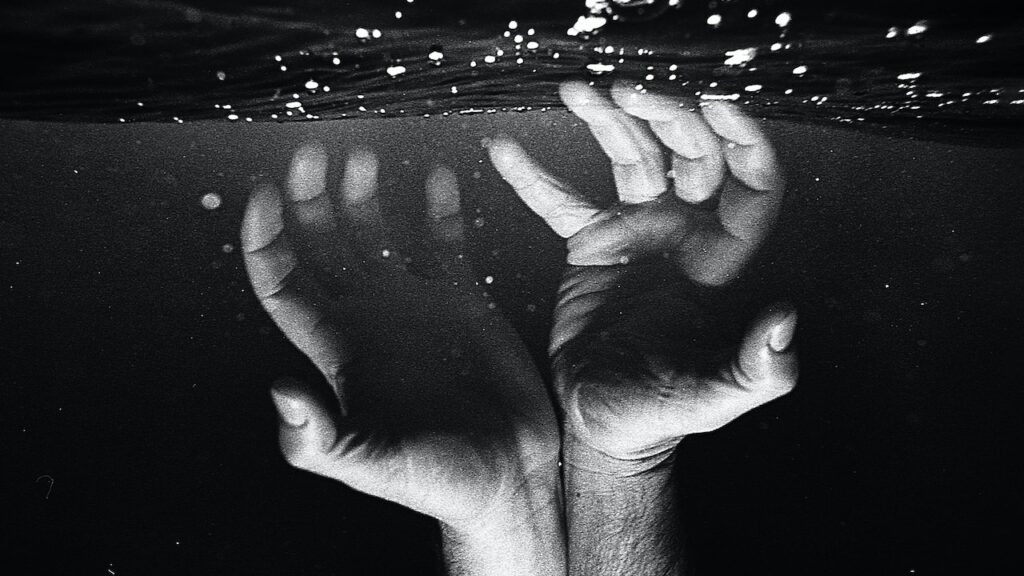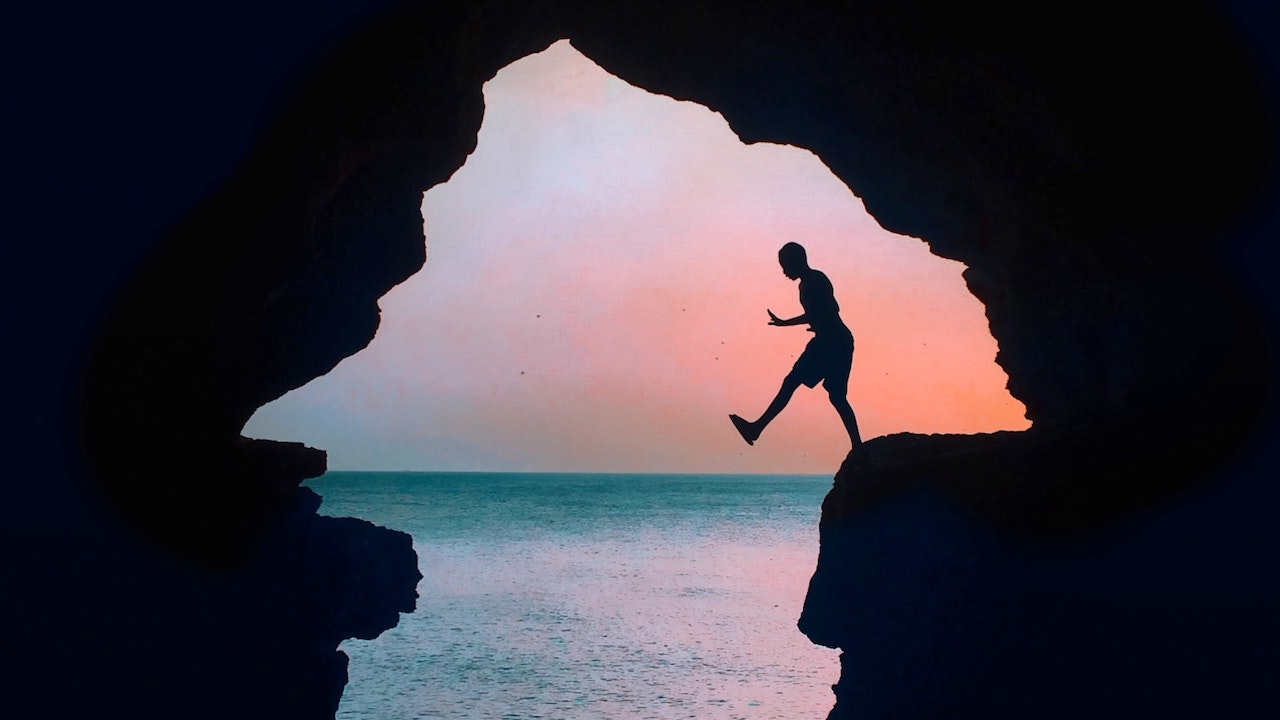Deep Water soloing is another rock climbing sport that takes the word “extreme” to a whole new level. But this doesn’t imply that soloing isn’t safe. Ask any “Psycho Bouldering” pro about their experience, and you’ll never hear the end of it.
Recently, I saw the documentary Deep Water by Tim Emmett that blew my mind. The “wild” side of the psicobloc world in the immersive documentary set in Vietnam makes you want to jump out of bed and start climbing right away.
But it’s not that simple. I’ve been climbing for over twenty years, and after trying all sorts of extreme sports, my first experience with deep water soloing was bittersweet. Although, the lessons I learned made the subsequent tries all the more memorable.
In this guide, I’ll explain to you the ins and outs of deep water soloing (DWS) along with the best places to try this sport. I’ll also share tips for necessary precautions and link to my complete safety guide.
What is deep water soloing?
I wouldn’t blame you if you didn’t know that DWS is just rock climbing with extreme conditions – the name is a bit ambiguous.
Deep Water Soloing or psicobloc (“Psycho Bouldering”) is an extreme rock climbing (or bouldering) sport in which you solo climb the boulders without any equipment or even a safety rope. Psicobloc solely relies on the water at the base of the climb to cushion the fall if you lose your footing while climbing.
It was reportedly founded by Miguel Riera and his climber friends in Majorca, an Island of Spain, back in the 1970s. Miguel and his friends couldn’t climb the popular bouldering and climbing spots due to the crowd and demand in that area. So, they resorted to climbing above the sea of Majorca to cushion the blow if they fell.
They found it to be an extreme sport without a doubt. But the people took a liking to it, and the “game” that started in Majorca can now be done in Texas’ Lake of Austin and many other places in the United States.
So, psicobloc is just bouldering without all the equipment and gives you the option of diving back to start over again. Another factor that plays in favor of deep water soloing is the accessibility of the sport since less equipment equals fewer upfront costs compared to other climbing alternatives.
How to go deep water solo climbing?
The sport is in no way a child’s game. It takes years of practice in rock climbing and bouldering to deep water solo climb and truly enjoy the experience. But if you go to any reputable forum right now, you’ll find that people are not as scared as you might think.
Psicobloc comes with its own set of risks and rewards, just like any other extreme sport. And, just like the others, you can do it without harm if you know what you’re doing.
5 things deep-water climbers should know
Here are the five most important tips/advice for climbers.
1. Timing is important
Timing is critical when soloing. There are two different aspects of timing to consider when planning your psicobloc adventure.
First is the season. If you’re not familiar with the sport or accustomed to icy and freezing water, plan your adventure during the summer. Potential injuries can also be a bit rougher during winters for beginners.
The second aspect of timing is getting the day of the adventure right. You can plan everything right, but you can’t exactly plan the weather, especially around shores. Sometimes, you’ll find that the tides are too harsh when you arrive at the destination, or the wind is blowing in the wrong direction, and you’ll have to call it off.
It won’t happen every time, but it’s better to expect the unexpected. You can also get in touch with local authorities or the administration beforehand since they may know the climate better than you do.
2. The water will be cold
If I wasn’t clear enough, I’ll repeat it. You need to be well prepared for the low water temperature around the shores. The climbing activity itself is very taxing, and if it takes you by surprise when you fall in the water, it might be uncomfortable. Make sure you know what you signed up for.
3. Don’t climb solo
It’s called deep water soloing because you climb solo without support from a helper or climbing devices such as ropes. That doesn’t mean that you have to go solo though.

Accidents may happen unexpectedly and unintentionally. Even if you’re a pro at the sport, none of us are Superman. Always go deep water soloing in a group.
4. Practice makes perfect
Practicing the sport is your best defense against any injury or mishappenings while climbing. There are various ways you can practice deep water soloing without actually doing it.
The first thing you should do is build your stamina. You’ll be going up a rock with bare hands and falling in cold water, so you don’t want to be out of breath when you fall. The basic exercises used while bouldering and rock climbing are suitable for building stamina.
The second thing to do is to go bouldering and rock climbing. There’s nothing more educational than a hands-on experience. Before you plan your soloing trip, make sure you have climbed quite a few boulders and/or have been to the climbing gym for some time.
The third thing depends on your location. You can climb artificial deep water soloing walls, participate in your local competitions, and slowly build up to climb natural locations.
5. Gear
Those unfamiliar with psicobloc sometimes think that you don’t need gear or equipment, and that’s true to an extent. While you don’t need ropes or harnesses, you still need some basic stuff.
- Helmets are not preferred by regular climbers when soloing, but I recommend using them for newcomers.
- Clothes that you can get wet in and still be comfortable to climb.
- Climbing shoes that can get wet and still have a good grip, or else you may not be able to climb the second time and can injure yourself.
- Liquid chalk will help you while climbing and not create a mess when you fall.
Pro tip: Rub some liquid chalk on your elbows and hands before climbing so that you can re-apply chalk on your fingers mid-climbing. You can also buy shorts with a zipper and keep a small pouch filled with liquid chalk.
Best spots for deep water solo climbing
There are quite a few places in the United States and worldwide where you can go deep water soloing. Let me tell you the best locations to experience this exhilarating sport at its fullest potential.
(P.S. I did a small survey on various forums so you can take this list to the bank.)
Best Deep Water Climbing Locations in the US
- Pace Bend Park (Austin, Texas)
- Lake Powell (Utah)
- Laurel Lake (Kentucky)
- Banks Lake (Washington)
- South Point (Hawaii))
- Kinkaid Lake, Jackson County (Illinois)
Best Deep Water Climbing Locations Worldwide
- Majorca, Spain
- Railay, Thailand
- Blue Grotto, Malta
- Pembroke, United Kingdom
- Azores, Portugal
- Ka’anapali, Maui
- Olympos, Turkey
Here’s my guide to the best solo climbing locations and their cost breakdown to help you plan your trip.
Is deep water soloing dangerous?
If you know basic science, then you should know falling on water is not that great of a cushion if you don’t position yourself correctly.
While deep water soloing is relatively safe, it’s not accident-proof. This guy on Reddit got excited and jumped 60 ft into the water. The stunt put him in crutches for quite some time.
So, here are some basic tips to stay safe when climbing:
- Know the route; straying off and not knowing where you are can be very dangerous.
- Know how to swim in deeper waters (it ain’t a swimming pool).
- Bring a first-aid kit with you.
- Don’t climb solo.
- Ensure that the water is deep enough and there are no rocks or debris in the area where you’ll fall.
These “tips” are just fundamental things you should know, and there is a lot more where they came from. Before you climb, I recommend reading my guide on the dangers of deep water solo climbing and how to prevent them.

